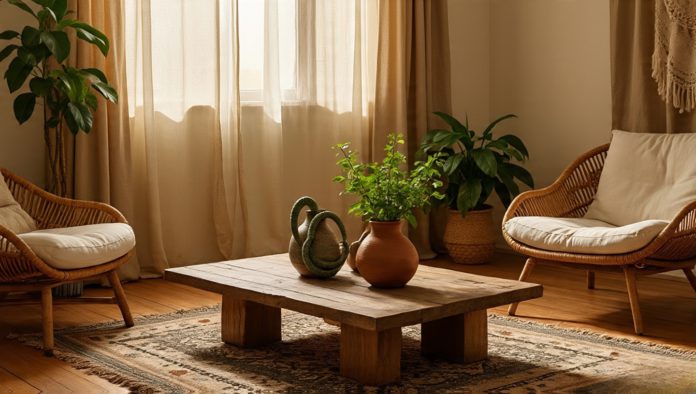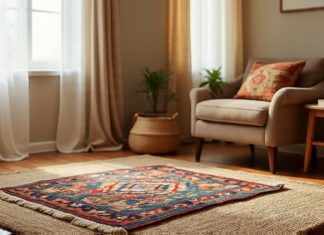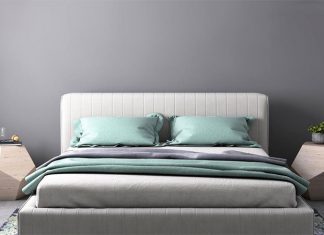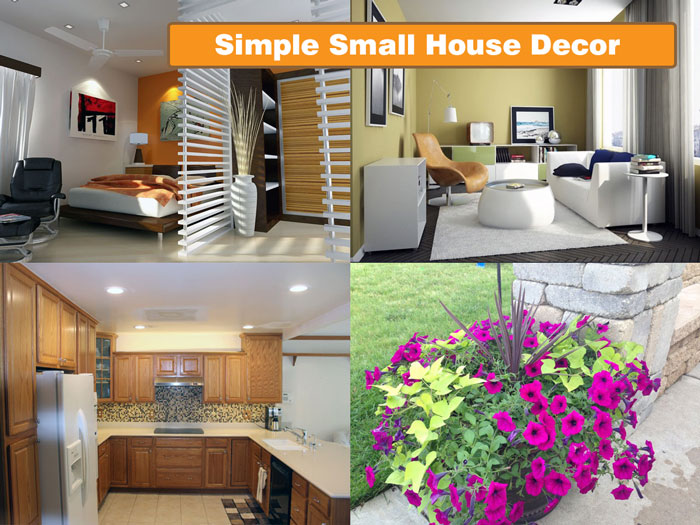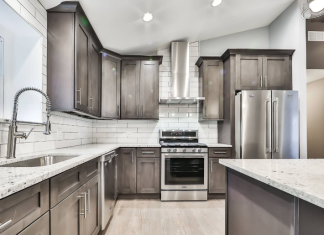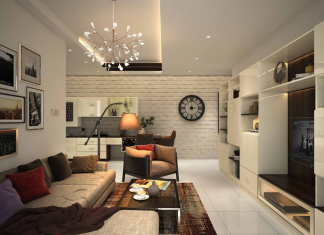Roohome.com – Bohemian style has always been about more than looks. It’s a lifestyle that celebrates freedom, creativity, and stories woven into every cushion and rug. But here’s the thing: not everything that looks Boho is actually aligned with the values of sustainability or ethics. The market is flooded with mass-produced, “Boho-inspired” pieces that look soulful at first glance but have a heavy footprint behind the scenes. So how do you make choices that reflect both style and substance?
I’ve gone through this dilemma myself. I once bought a “handwoven” throw online only to realize later that it was polyester made in bulk, nowhere near the artisanal craft it claimed to be. Since then, I’ve become much more intentional. In this article, I’ll share practical insights, little lessons from my own decorating experiments, and a guide for what to buy (and what to avoid) when you’re chasing sustainable and ethical Boho decor.
Why sustainability matters in Boho homes
Bohemian design often draws inspiration from nomadic traditions, cultures rich in craft, and a spirit of connection to nature. That spirit loses its authenticity if we ignore where our things come from. Buying sustainable Boho decor means valuing the artisans, the earth, and the stories we bring into our homes. It means choosing pieces that won’t just look good but feel good—because they align with the free-spirited ethos at the heart of Boho.
And let’s be honest, it feels different. A hand-thrown clay vase from a local potter warms a room in a way no plastic “rustic-style” copy ever could. It has weight, texture, and even a faint earthy smell that tells you it came from soil, not a factory mold.
Start with the basics: materials matter
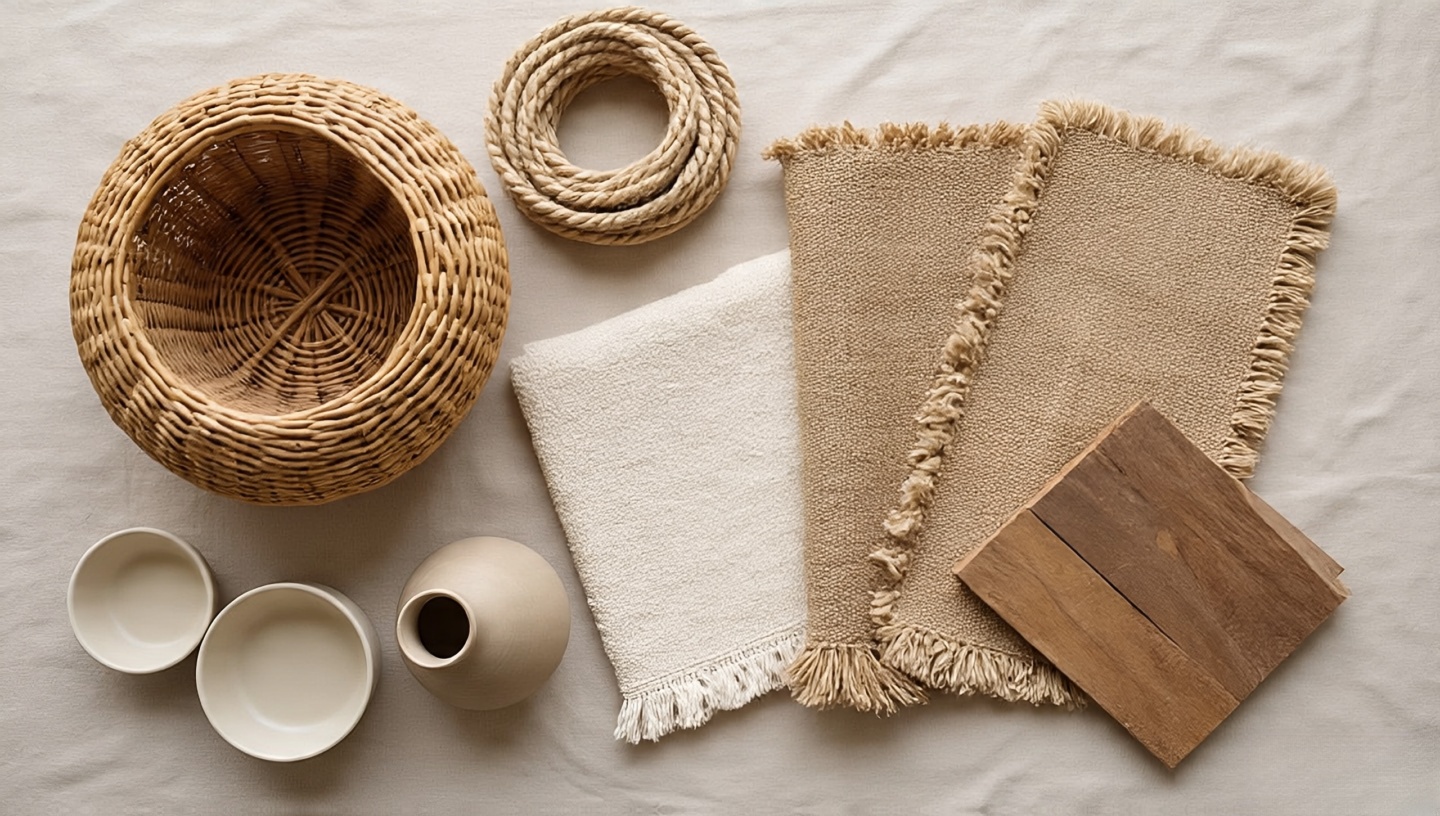
- Good choices: Rattan, bamboo, jute, hemp, organic cotton, wool, reclaimed wood, clay, stone.
- Avoid: Polyester “faux macrame,” synthetic rugs, vinyl wall hangings, and cheaply lacquered particle board furniture.
Tip: When buying rugs, go for handwoven wool or jute pieces. They may cost a little more upfront, but they last decades, and every footstep feels grounded and natural. If you’re curious about how Boho rugs shape a room, check this guide to Bohemian interiors where textiles take the spotlight.
What to buy: Soulful pieces that last
Here’s my personal shopping list of sustainable and ethical Boho items that truly elevate a home:
- Handwoven baskets: They’re functional, durable, and add texture. I still use a palm-leaf basket I picked up in Bali ten years ago—it’s held everything from laundry to firewood.
- Vintage rugs: Pre-loved textiles bring history and character. A slightly faded rug feels like it has heard laughter, tears, and music before yours. That patina is magic.
- Clay and ceramic pottery: Beyond aesthetics, pottery connects you to earth. There’s something grounding about drinking tea from a slightly imperfect handmade mug.
- Reclaimed wood furniture: Farmhouse tables with scratches and dents? Yes, please. Every mark tells a story instead of hiding under glossy varnish.
- Natural fiber textiles: Organic cotton throws, hemp cushion covers, linen curtains that billow when the window is open. They don’t just look soft—they feel soft on the skin.
What to avoid: The “fast fashion” of home decor
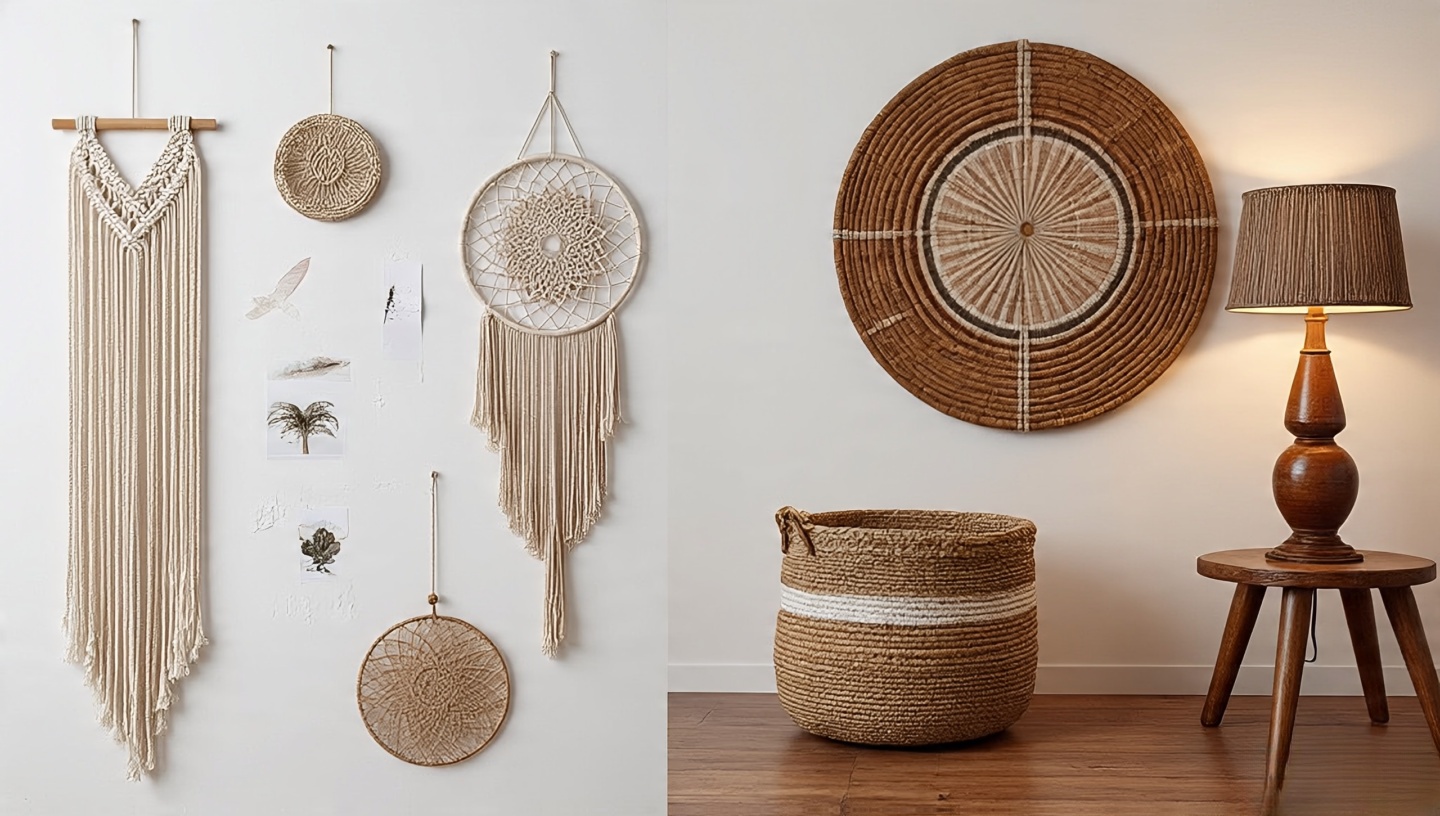
- Mass-produced dreamcatchers: Often made in factories, detached from their cultural significance, and sold as cheap accessories. Respect the origins.
- Synthetic macrame: Real macrame is cotton rope or hemp. If it feels plasticky, it’s a sign to put it back.
- Plastic “tribal” masks: They’re neither tribal nor meaningful, just molded plastic.
- Disposable decor trends: Glittery wall decals or “distressed-look” furniture that chips into landfill after a year.
I once fell for a plastic wall hanging because it looked vaguely “ethnic.” Within months it warped in the heat and ended up in the trash. It taught me to pause before buying: is this piece respectful, durable, and authentic? If not, skip it.
Mixing sustainability with personal taste
Ethical Boho doesn’t mean ascetic minimalism. You can still layer colors, textures, and stories—but with intention. Sometimes I’ll mix a vintage Persian rug with a new hemp pouf. Other times, I’ll pair a flea-market lamp dengan a handwoven shade. The trick is balance: one-of-a-kind finds plus eco-conscious basics.
Supporting artisans and fair trade
One of the joys of Boho design is how global it feels. Moroccan lanterns, Indian block-printed textiles, Mexican serapes—they’re treasures when sourced fairly. Look for fair trade certifications atau buy directly from artisans at markets. Not only do you get authentic craftsmanship, but you also support livelihoods.
I still remember meeting a weaver in Oaxaca. She showed me how she dyed yarn dengan crushed cochineal beetles, turning it into the most vibrant red. The blanket I bought wasn’t just fabric; it was a piece of her world, her story. That’s something no mass-made product could give me.
Lighting: creating atmosphere the eco-friendly way
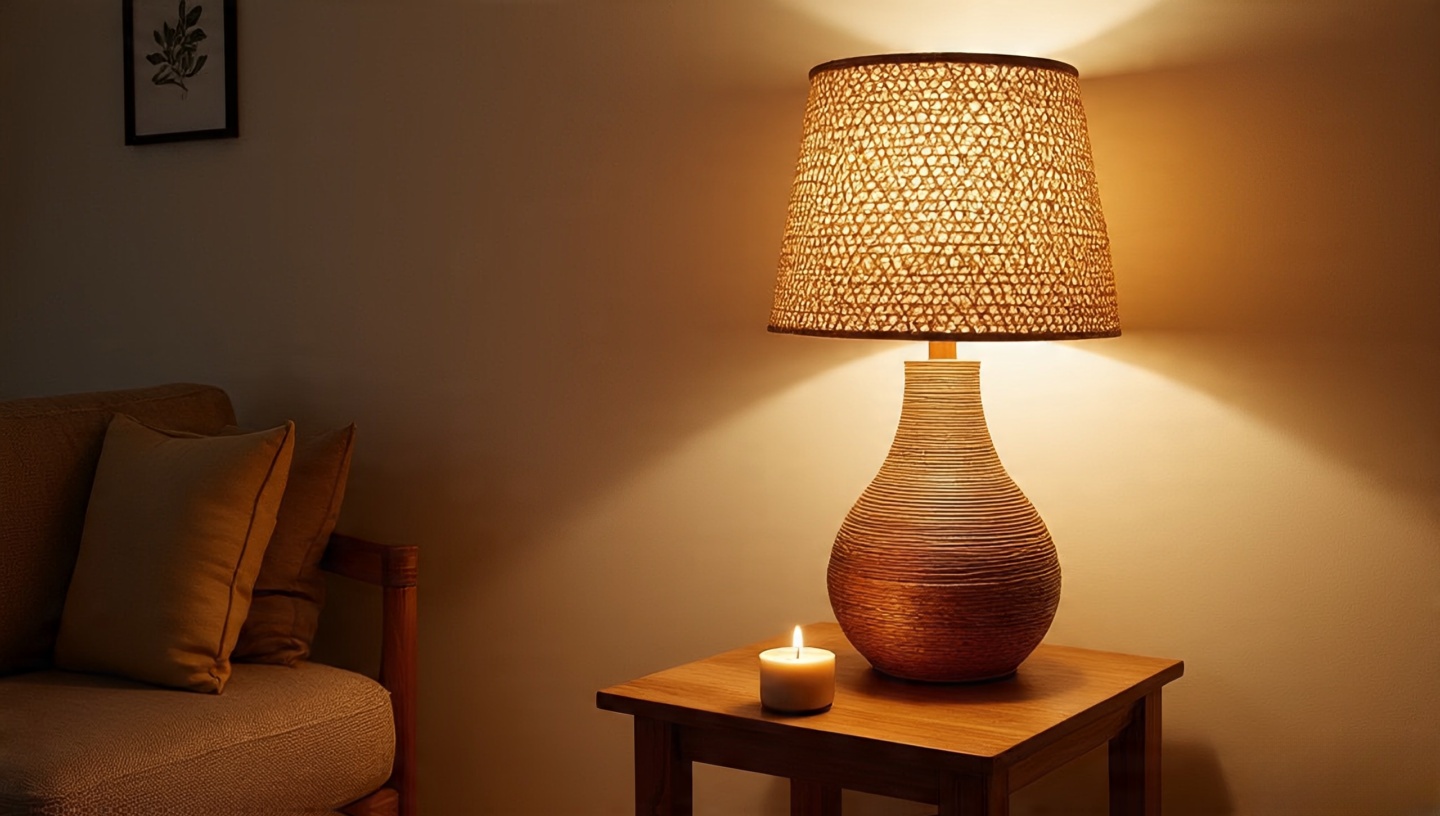
Plants: the sustainable centerpiece
Nothing feels more authentic to Boho style than greenery. But instead of chasing rare or imported species, embrace hardy, local plants. Snake plants, pothos, or even a cluster of herbs in terracotta pots can make a room come alive. They purify the air and add that untamed vibe without harming ecosystems.
Practical tips for sustainable shopping
- Thrift before you buy new: Vintage shops and flea markets are treasure troves.
- Ask about origins: If the seller can’t tell you where something was made, that’s a red flag.
- Touch before purchase: Natural fibers feel alive. Synthetic ones feel flat, almost too smooth.
- Smell wood or textiles: Real wood has a faint earthy aroma; plastic smells like chemicals.
- Buy less, choose better: A few authentic, ethical items will always outshine a room full of cheap lookalikes.
But what about eclectic and maximalist blends?
Boho often overlaps with eclectic and maximalist styles, and sometimes people mix them all together without realizing it. If you’re curious about where the lines blur, I recommend this piece: Boho vs Eclectic vs Maximalist. It’s helpful when deciding whether that ornate velvet chair belongs in your “ethical Boho” setup or tips the scale toward maximalism.
The joy of imperfections
Here’s something I’ve learned: imperfections are often where the soul lives. A cracked glaze on a handmade bowl, uneven dye in a rug, or a rough edge on a carved stool. Those quirks remind you that a human hand, not a machine, shaped it. That’s sustainable and Boho in the truest sense.
Living with what you have
Sometimes the most ethical thing is not buying at all. Rearrange your space, repurpose a table, dye an old cushion cover. I once turned a ladder into a blanket rack just because I had no space in the closet. That small experiment became a favorite corner in my living room, cozy and resourceful at the same time.
A warm note to end on
Creating a sustainable and ethical Boho home isn’t about strict rules. It’s about slowing down, asking questions, and letting your space reflect values as much as beauty. If you start small—say, replacing one synthetic throw with a handwoven cotton one—you’ll notice the difference instantly. The room won’t just look good; it will feel alive, grounded, and aligned with the spirit of Boho.
So, maybe this week, wander into a flea market, pick up a basket that smells faintly of straw, or swap out that plastic lamp for a clay one. You’ll feel the shift. And that’s where the magic begins.
